Understanding how to tune your RC Car’s suspension is essential if you want to be a competitive RC racer. Suspension tuning is a vast subject with many variables that may overwhelm new racers. Hopefully this guide will help you get started with some of the basics.
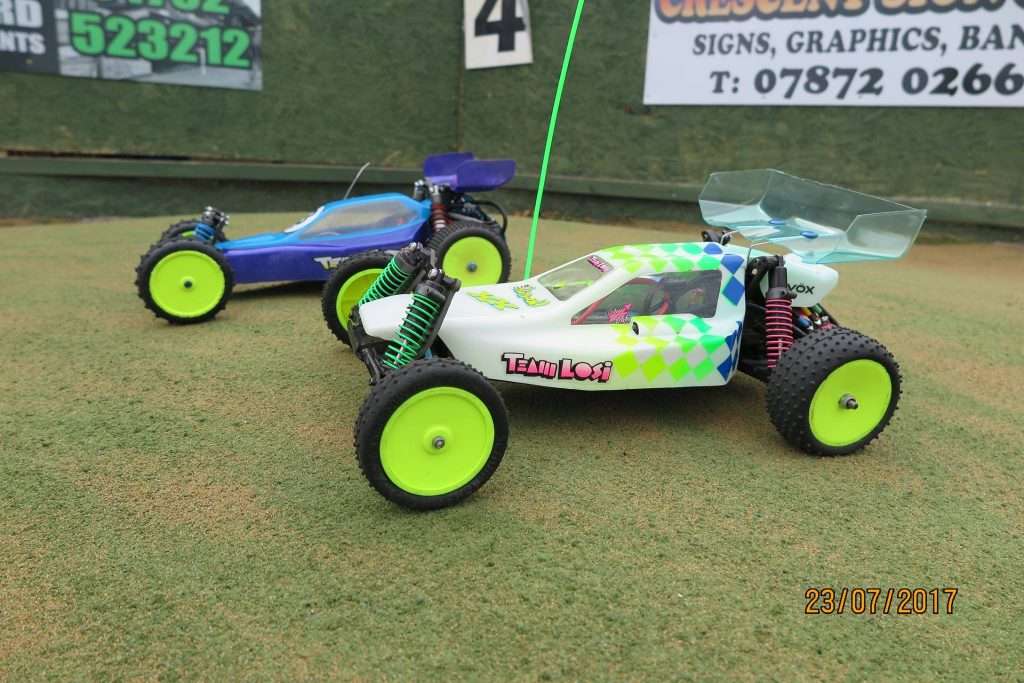
The guide covers the following aspects of RC Car Suspension tuning:
Introduction
The primary purpose of the RC Car suspension is to allow the car tires to stay in contact with the ground (increasing grip) while absorbing bumps, jumps and keeping the model stable. A stable car will be easier to drive, allowing you to focus on a cleaner racing line and faster lap times.
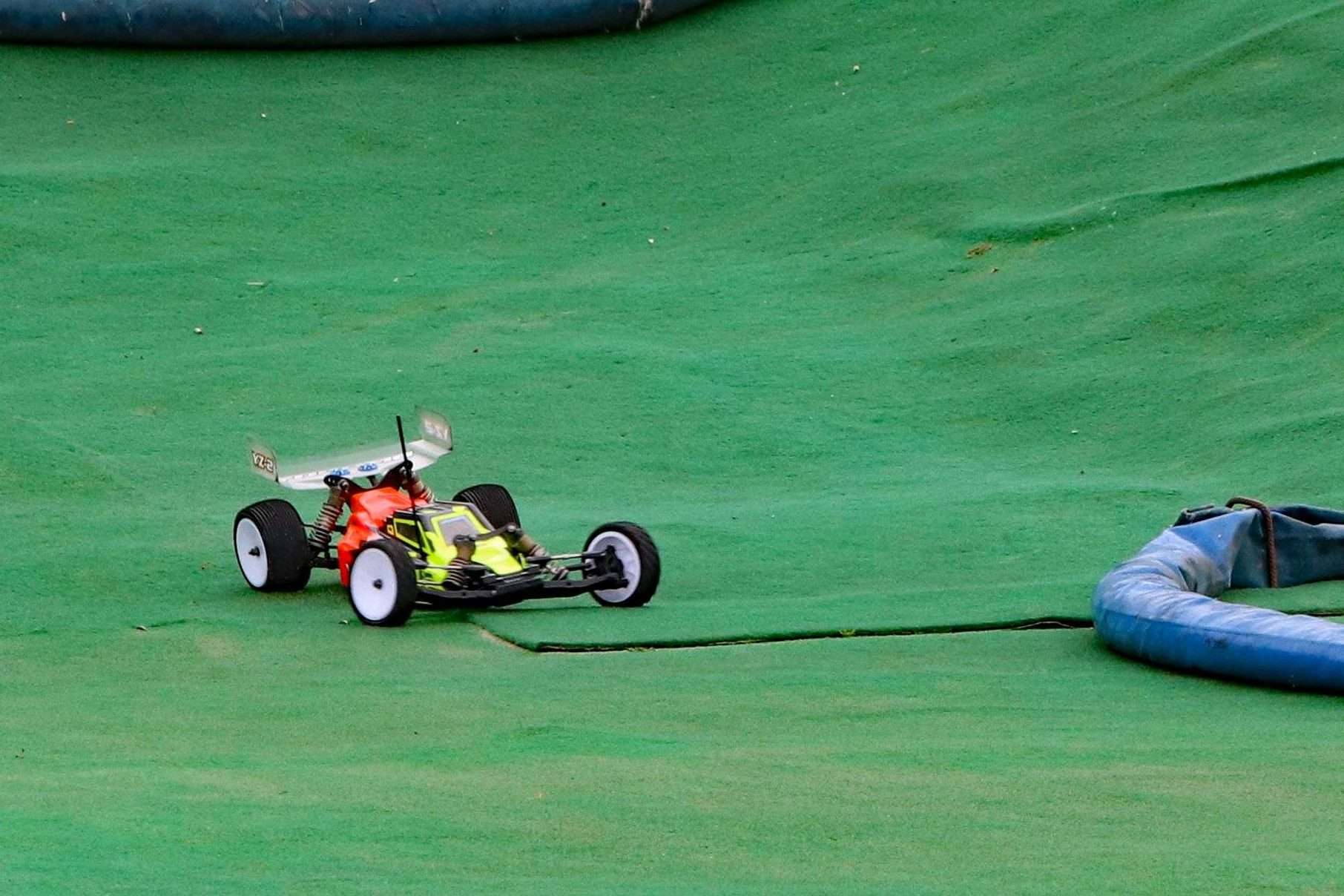
The box setup of a competition RC Racing Car is a good starting point and should work well on many different tracks and conditions. However, once you understand how to tune the suspension, you’ll be able to optimise the car for any track or conditions.
Using a combination of different springs, oils and pistons, you can increase or decrease grip, stability, and damping, for example.
Starting with springs, I will explain how changing these can affect handling.
Springs
Springs are rated from soft to stiff, with many increments in between. They mainly affect grip, bump handling and body roll.
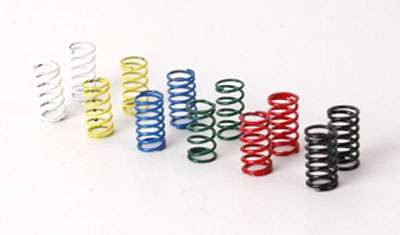
Softer Springs
A softer spring (lower spring rating) will be more sensitive. It will allow the suspension to respond to smaller, more minor bumps in the track. This results in increased grip and body roll.
Soft springs are a good choice when racing on low grip tracks or in wet/slippery conditions.
Notes
When using softer springs, the car may ‘bottom out’ when landing large jumps or hitting big bumps at speed. This can be resolved by using different pistons to increase ‘pack’ (see the relevant sections further down to learn more about pack).
Undesirable ‘body roll’ can be reduced by using anti-roll bars (or sway bars).
Stiffer Springs
A Stiffer spring (higher spring rating) will give a firmer ride, and handling will feel more responsive and aggressive. The suspension will not respond as well to minor bumps, so may skip and lose traction on rough terrain, but it will drive more like it is ‘on rails’ if the track is smooth. Body roll will be reduced.
Reducing Grip (or traction) roll
If your car is ‘traction rolling’ (flipping over when cornering) on a high grip track, trying a stiffer spring is one way to reduce this problem.
Retaining the same level of Damping with different springs
When changing to softer springs using the same oil, damping can increase. Using a lighter oil can help retain the same level of damping with the softer spring setup. The same goes for harder springs; these will need a heavier oil to provide the same level of damping. (See oils and pistons sections further down).
Matching springs/suspension to front and rear (or not)
Your suspension settings and springs, oils, etc. should always match on both sides, but the front and rear ends of the car don’t necessarily have to. For example, a rear 2 Wheel Drive (2WD) off road buggy might use stiffer springs and heavier oil up front to improve steering response, with softer springs at the back for more traction from the driven wheels. Set-up sheets (which you can find online or in the manual) for your particular car can give you some ideas.
Oils
Oil filled shock absorbers (also known as dampers) can be filled with different weight (viscosity) oils. The oil used affects damping and rebound.
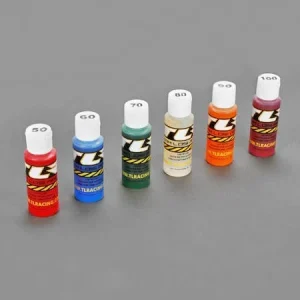
Without oil dampers, a suspension will react and spring back and forth until it settles, causing the car to bounce around. Oil filled dampers add resistance that absorbs energy and settles the car more quickly, creating a more stable ride. The weight of the oil affects the amount of damping, and this is interrelated with springs and pistons.
Heavier Oils
Heavier oils provide more resistance to shock travel, absorbing more energy and slowing down the suspension response. These are often used on Smooth tracks, or a track with large jumps.
Lighter Oils
Lighter oils can speed up the reaction time and help maintain control when driving over smaller, high-frequency bumps or rough terrain. Lighter oils can also increase traction in slippery conditions such as when racing on loose dirt or in wet weather.
Try different oil and spring combinations and see what works best for you.
Pistons
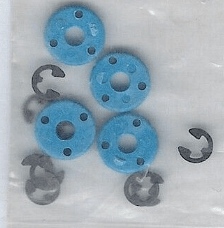
A piston has a number of holes that allow the shock oil to flow through as the shock is compressed and released. A piston might have two large holes, or six smaller holes, for example.
Changing the size of the holes, or the number of holes of a piston affects how the oil flows through it.
Fewer, larger holes allow the oil to flow more easily – often used with heavier oils and harder spring setups.
Lots of smaller holes increases resistance to the flow, slowing the oil down. These pistons can be useful when you are using very light oils and soft springs, or if you want to increase ‘pack’ (see below).
Pack
When hitting a bump at high speed, or landing a large jump, the shocks compress more quickly. The increased speed of the piston trying to push through the oil results in more damping compared to when the car is stationary or moving slowly (static damping). This is known as ‘pack’ among RC car racers, and tweaking it can be very useful for different tracks or conditions.
You can increase or decrease the amount of pack with different oil and piston combinations.
As an example, if you had two different pistons, one with 2 large holes and one with 6 small holes, as long as the area of the holes on both pistons were equal, the piston with more, smaller holes would provide more ‘pack’.
Piston Shapes
Pistons are usually flat but are also available in different shapes.
Tapered Pistons
Tapered pistons are designed to affect rebound and compression independently. With the taper facing down, the piston will travel faster when on rebound, which can help get the tires in contact with the ground sooner. This piston can be useful on a rough track.
Shock Angle
The shock tower and suspension arms (wishbones) on a competition RC car will usually have several different shock mounting holes to choose from.
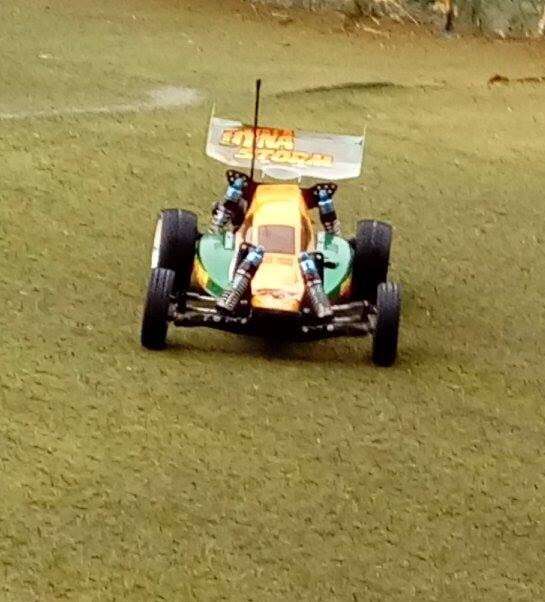
This allows you to change the angle of the shocks. You can use a more upright position, or lay the shocks over more at an angle.
Upright position
Using the outer top mounting holes and the inner bottom mounting holes will make the shocks stand more upright.
Standing the shocks upright creates a more linear movement. This means that the resistance as you compress the shock stays the same through the whole motion. Upright shocks will give you more shock travel. This set up can be useful for large jumps.
Laid over position
Using the inner top and outer bottom holes lets you lay the shocks over at more of an angle.
Laying over the shocks creates a more progressive movement. The suspension will feel softer and more responsive when the shock has less load on it, and as the shock compresses, it gets progressively stronger. Laying over the shocks can stabilise the car and give it a ‘flatter’ handling feel which can help on difficult, bumpy tracks.
Laying the shocks over can minimise body roll on cornering and prevent grip roll.
Experiment with laying your shocks over more to see how the car feels. Ride height will need to checked after this change.
Ride Height
Ride height is something that can be changed to suit different tracks or conditions.
Your RC Car manual should tell you what the default ride height setting is; for example, a 1/10th off road buggy might be 18mm or 20mm. The measurement is taken from the chassis base to the ground when the car is fully loaded (battery, radio gear etc.). Always start with the default setting.
A ride height gauge (or a spacer of some kind that you know the thickness of) can be used to measure the gap.
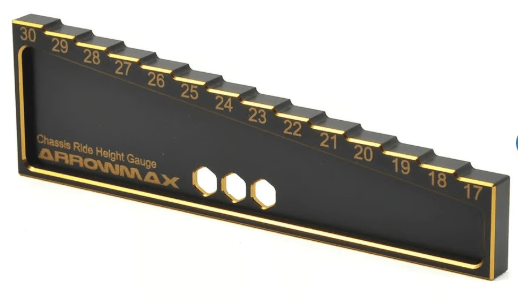
A lower ride height, which is desirable in racing, brings down the centre of gravity and can improve handling and Corner speed.
A higher ride height can help on bumpy tracks and large jumps.
Ride height is adjusted by preloading the shocks; raising or lowering the point where the spring is secured on the shock body. This is done either by a nut that holds the spring in place, an adjustable clamp, or, on cheaper shocks, a spacer insert is often used.
Anti Roll Bars / Sway Bars
Anti roll bars (sometimes known as sway bars) can be fitted onto the suspension arms to help control body roll when cornering.
As you are cornering, weight is shifted to the outside of the car. Fitting an anti roll bar forces the opposite (inner) wheel’s suspension to compress as well. This helps keep the car flat around the corner, and lowers the centre of gravity – allowing you to take it faster and increasing stability.
Anti roll bars come in different thicknesses; thicker anti roll bars have more of an effect.
Check out my other popular guides:
